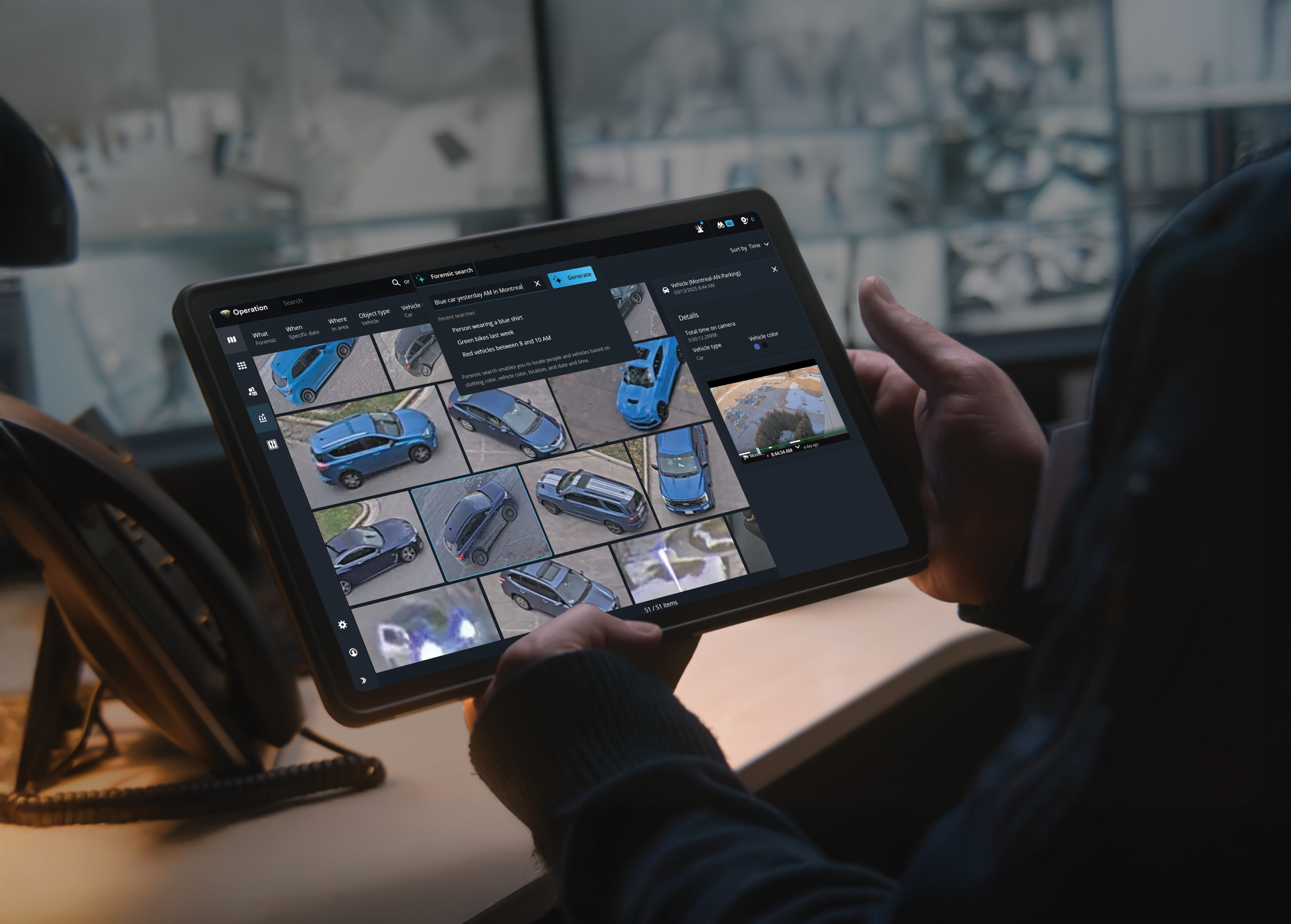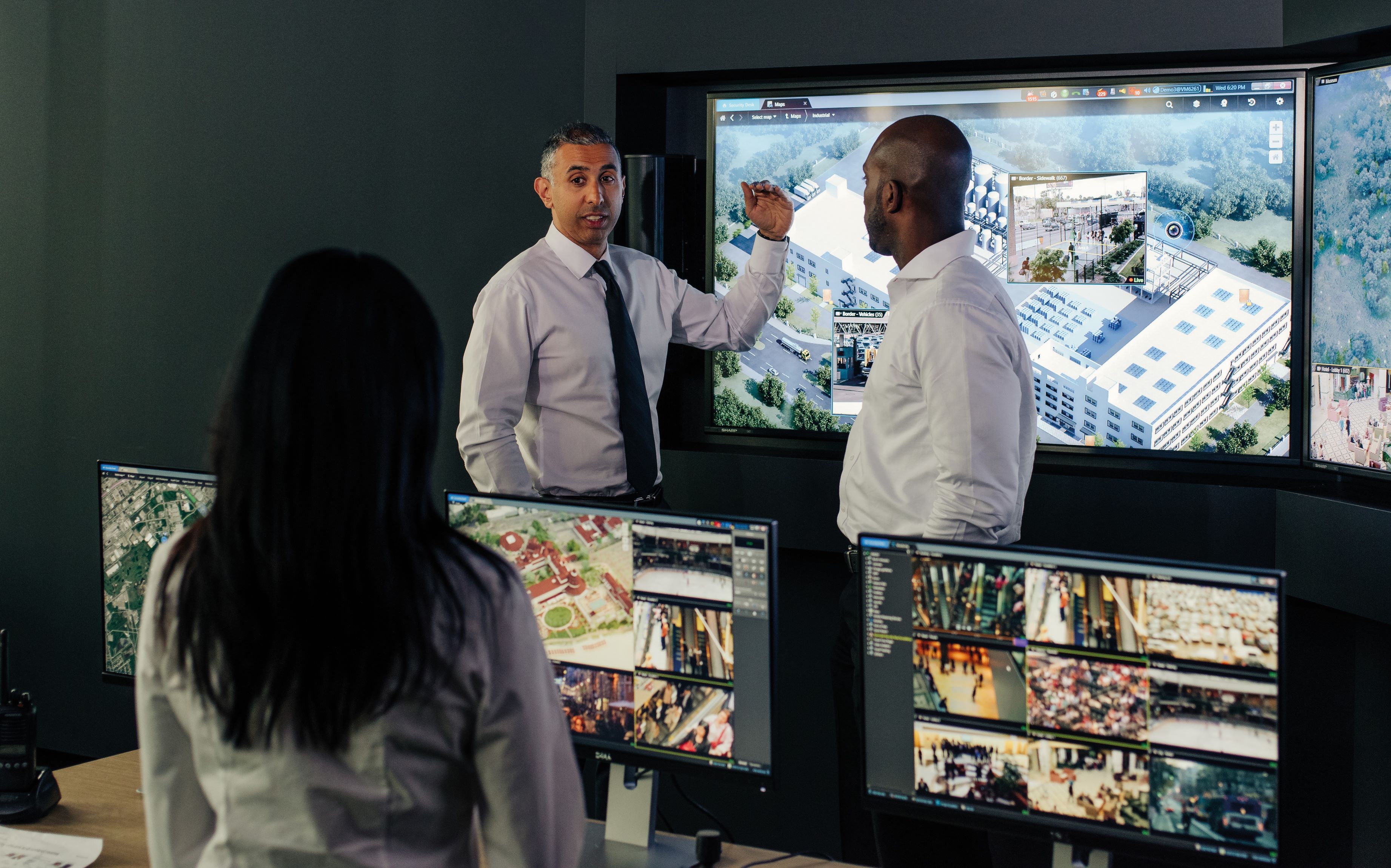5 ways technology can simplify evidence sharing
Learn how video management systems (VMS) and digital evidence management systems (DEMS) simplify video evidence collection, management, and sharing for investigators.

Sharing video evidence is key in any investigation, but managing it can get complicated. Here are five ways that a video management system (VMS) combined with the power of a digital evidence management system (DEMS) can make the process easier.

Easily collect and manage video evidence |
Gathering video evidence from various, disparate systems can be time-consuming and overwhelming, especially when responding to video requests, searching through hours of footage, ensuring privacy compliance, and maintaining proper and secure storage. A digital evidence management system simplifies the process by making it easier to consolidate, manage, and securely share crucial evidence with authorized stakeholders. Here’s how:
- Smart search and filtering: Quickly find relevant footage using advanced search tools that filter by date, time, object type (including a person or vehicle), or specific events, saving investigators valuable time.
- Automated redactions: Protect sensitive information like faces and license plates with automated redaction tools, ensuring privacy compliance while preserving key evidence.
- Secure evidence storage: Keep all video evidence organized, easily accessible, and secured with encryption in one repository. Track all evidence activity with audit trails to maintain chain of custody and fully leverage a secure digital evidence management system that is integrated with your video management system.
GENETEC VIDEO PLAYER

Prepare evidence with easy-to-use tools |
When browsing through evidence, it's helpful to annotate and quickly navigate to find what you need. Here are some tips to make this process more efficient:
- Create custom layouts and add notes: Use video and digital tools to make custom layouts with multiple camera views. You can also add notes, arrows, and drawings directly on the video timeline to make it easier to understand and share with others.
- Generate automatic reports: Quickly create reports that sync with video clips, timestamps, and key details. This saves time and ensures all your evidence is consistent.
- Use video analytics: Take advantage of video analytics to automatically spot important events like loitering, abandoned items, or unauthorized access. This helps speed up investigations and reduces the need for manual checks.
BLOG
Securely share evidence |
Once you've prepared your evidence, you'll likely need to share it with internal teams or external stakeholders, but it's important to do so securely. Here are some ways to ensure that evidence is shared safely:
- Role-based access control: Set up access control policies to determine who can view sensitive evidence based on their role in the organization. Ensure only authorized individuals can access the data, ensuring security and protecting the chain of custody.
- Share evidence electronically: No longer rely on having to transfer evidence via DVDs or USB keys. Save time and easily share video directly and securely from a digital evidence management system.
- Digital watermarking: Add digital watermarks to shared evidence to stop unauthorized distribution. This helps track where the evidence came from and ensures it remains intact and untampered with.
BROCHURE

Enhance collaboration for investigators and legal teams |
Seamless communication and access to evidence are key for effective teamwork between investigators, legal teams, and stakeholders. Here’s how a VMS and DEMS can help:
- Secure collaboration platforms: Use secure platforms integrated with your VMS to enable smooth communication and information sharing between investigators, legal teams, and external parties.
- Review evidence from anywhere: Allow authorized personnel to access evidence directly via web browsers, making it easy to review important files with just a click of a button without needing to install video player software.
- Video requests: Simplify and expedite the management of internal and external requests for video evidence access with a streamlined, efficient process.
VIDEO SERIES
Continuously improve evidence sharing |
Having a solid process in place is important, but it’s equally crucial to have a plan for continuous improvement. Here’s how:
- Regular audits and reviews: Routinely audit evidence handling and retention policies to find areas for improvement, ensuring compliance with privacy laws and regulations.
- Training and education: Offer ongoing training to everyone involved in the evidence-handling process to ensure that they follow the correct procedures.
- Technology upgrades: Keep up with the latest tech trends in video surveillance and evidence management to boost productivity and investigative efficiency.
Overall, using a VMS and DEMS can significantly streamline the process of collecting and sharing video evidence for investigations. With enhanced tools for secure storage, easy collaboration, and continuous improvement, law enforcement, organizations, and legal teams can work more efficiently and effectively.
